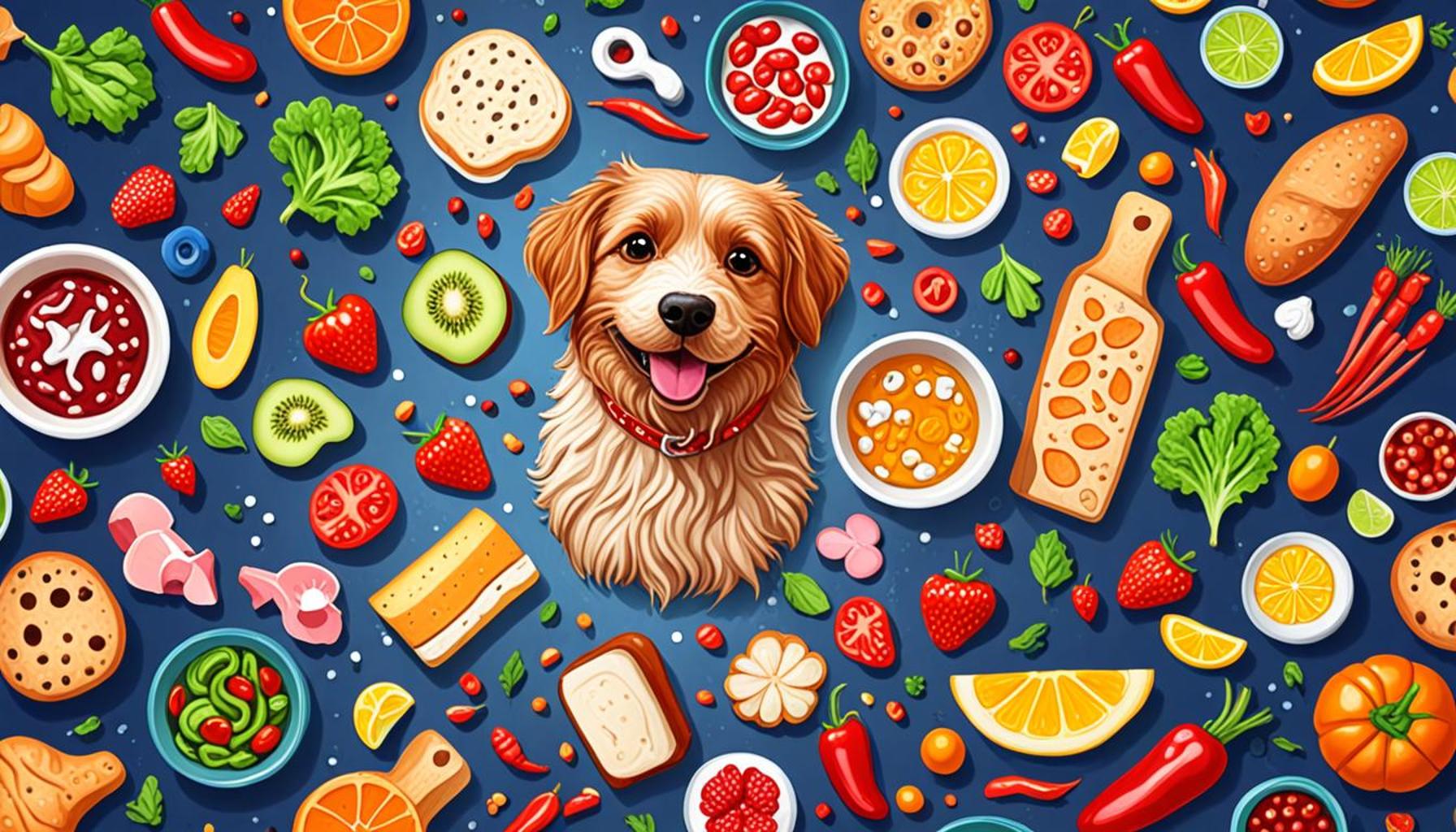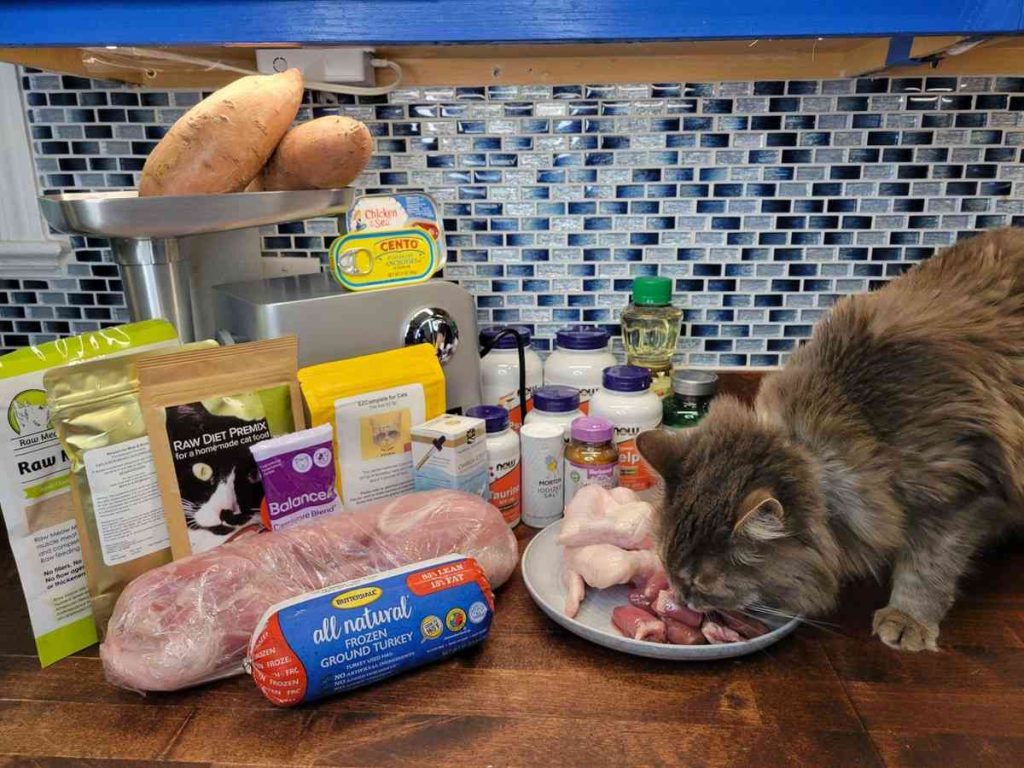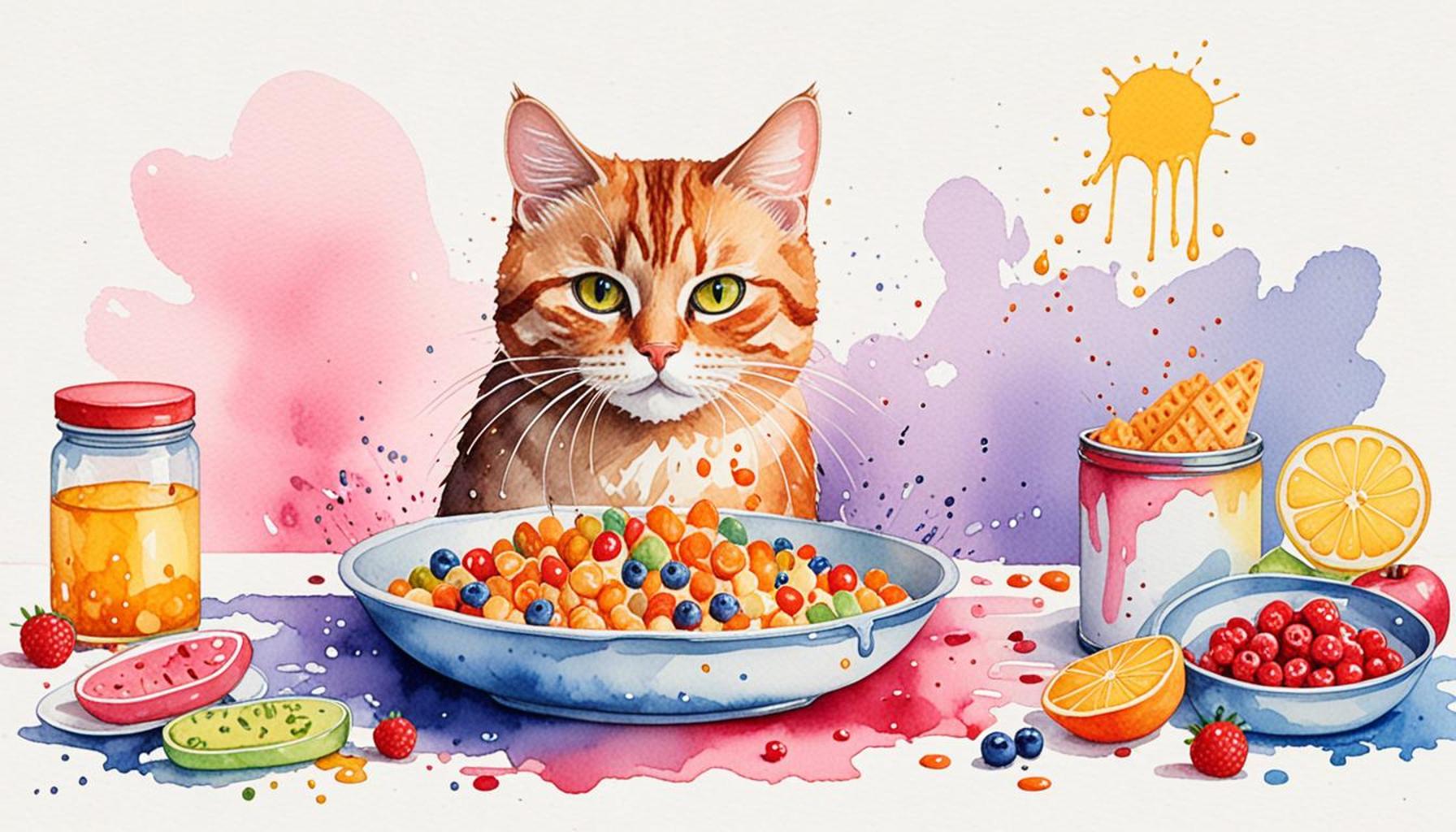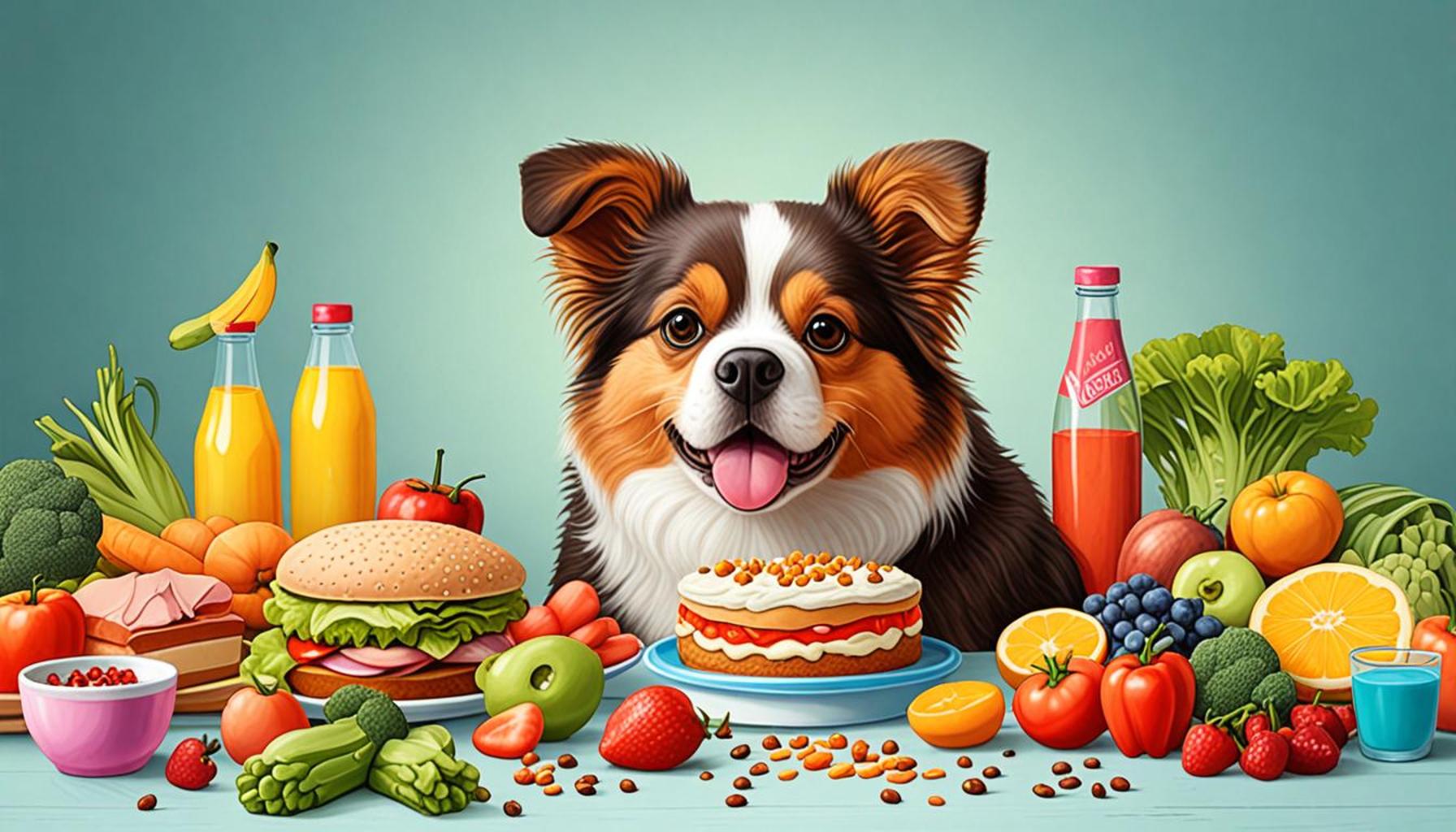Top Homemade Pet Food Options Preserve Nutrients and Flavor

Understanding the Benefits of Homemade Pet Food
As we journey deeper into the 21st century, pet owners across the United States are becoming increasingly vigilant about what they serve their beloved pets. This growing awareness stems from a desire for quality and transparency in pet nutrition, leading many to consider homemade pet food as a preferable option. Unlike commercial pet food, where ingredients are often obscured by complex labeling and vague terms, homemade meals put the power back into the hands of the owner.
One of the standout advantages of preparing pet food at home is the quality control it offers. Pet owners can source their ingredients from reputable suppliers, prioritize organic produce, and choose proteins from responsible local farms. For instance, opting for grass-fed beef or free-range chicken not only benefits your pet’s health but also supports sustainable practices. Additionally, this level of scrutiny extends to avoiding questionable fillers and preservatives commonly found in mass-produced pet food.
Allergies Management is another compelling reason many owners are leaning into homemade food. For pets with food sensitivities, a custom diet crafted at home means the elimination of common allergens such as corn, soy, or artificial additives. By introducing ingredients one at a time, pet owners can carefully monitor their pet’s reactions, ensuring meals are not only safe but also enjoyable. Imagine a pup who previously struggled with itchy skin suddenly thriving on a diet consisting of chicken, rice, and carrots—all made from scratch in your kitchen.
When it comes to flavor variety, the possibilities are virtually limitless. Homemade pet food allows you to craft meals that are not only nutritious but also appealing to your pet’s palate. Instead of being confined to a specific flavor dictated by commercial brands, you can rotate between recipes featuring ingredients like sweet potatoes, quinoa, or even pumpkin. For example, a canine-friendly stew made with lean turkey, green beans, and peas can be a delightful change from standard kibble.

Recognizing the potential health benefits of preparing your own pet food can be a game-changer. By focusing on fresh ingredients like lean meats, vegetables, and whole grains, you can create delicious meals while preserving essential nutrients. Whether you choose to prepare a basic chicken and brown rice dish or delve into culinary creations like salmon and sweet potato patties, there’s a wealth of recipes available online that cater to various dietary needs and preferences.
As we continue to advocate for healthier food options in our kitchens, it’s vital to consider extending this mindset to our pets. Homemade pet food not only fosters a deeper bond between owners and their pets through shared mealtime experiences but also champions health and well-being in our furry companions. Whether you are motivated by the desire for quality, the management of allergies, or simply the joy of crafting diverse and tasty meals, homemade pet food is an enriching alternative worth exploring.
CHECK OUT: Click here to explore more
Top Homemade Pet Food Options to Preserve Nutrients and Flavor
Creating a nutritious and flavorful diet for your pet doesn’t have to be a daunting task; in fact, it opens a world of culinary possibilities! When preparing homemade pet food, certain ingredients and preparation methods stand out for their ability to both maintain vital nutrients and enhance taste. Here are some top options that will keep your furry friend satisfied and healthy:
1. Lean Meats
Choosing the right protein source is vital in homemade pet food. Lean meats such as chicken, turkey, beef, and fish not only provide high-quality protein but also supply essential amino acids that support muscle development and overall health. Opting for grass-fed or antibiotic-free meats is an important step toward ensuring the highest quality. Here are some examples of how to incorporate lean meats:
- Chicken and Rice: A classic recipe, boiled chicken mixed with brown rice is gentle on the stomach and full of nutrients.
- Turkey Meatballs: Ground turkey can be rolled into meatballs paired with greens like spinach and whole grains such as quinoa for a protein-packed meal.
- Fish Dishes: Salmon provides omega-3 fatty acids, which are essential for skin and coat health. Serve it grilled or baked with sweet potatoes for a savory treat.
2. Whole Grains
Many commercial pet foods utilize grains that can be difficult for pets to digest. By incorporating whole grains such as brown rice, barley, or oats, you ensure that your pet benefits from fiber, which aids digestion and promotes a healthy gut. Whole grains are also a great source of energy for your active furry friends. Here are a few recipes that include whole grains:
- Oatmeal and Pumpkin Porridge: This dish combines oats with pureed pumpkin, an excellent source of vitamin A, making it great for eye health.
- Brown Rice Bowls: Cooked brown rice topped with lean meat and steamed vegetables presents a well-rounded meal full of complex carbohydrates and nutrients.
3. Fresh Vegetables
Adding fresh vegetables to your pet’s diet can significantly boost their nutritional intake. Vegetables provide essential vitamins, minerals, and antioxidants that support overall wellness. Some pet-friendly vegetables include carrots, peas, green beans, and sweet potatoes. Cooking or lightly steaming these veggies helps enhance their flavor while retaining nutrients. Consider these options:
- Vegetable Medleys: Combine finely chopped carrots, peas, and green beans with a protein source for a balanced dish.
- Sweet Potato Mash: Boil sweet potatoes and mix them with protein for a flavorful and nutritious side dish that promotes digestive health.
By focusing on wholesome ingredients, homemade pet food not only fosters a love for nutritious eating but also enriches your pet’s life with diverse flavors. Your effort will not go unnoticed, as the joy of a wagging tail or a content purr is the ultimate reward!
| Category | Details |
|---|---|
| Whole Ingredients | Homemade pet food allows you to utilize fresh, whole ingredients, ensuring maximum nutrient retention and eliminating fillers often found in store-bought options. |
| Flavor Enhancement | By choosing quality meats and vegetables, pets enjoy heightened flavor, making mealtime more enjoyable while still achieving balanced nutrition. |
When considering the best options for your pets, it’s essential to understand how homemade food can not only preserve nutrients but also enhance their dining experience. Traditional pet foods often contain preservatives and artificial flavors that can diminish the quality and taste of the meal. By opting for homemade alternatives, you have complete control over what your pet consumes, allowing you to tailor their diet to their specific health needs and preferences. The use of high-quality meats, vegetables, and grains ensures that your pet receives optimal nutrition right from their bowl. Many owners report noticing improved energy levels and overall health in their pets after switching to homemade diets. Additionally, the choice of ingredients can help address food allergies or sensitivities, offering a key advantage in a pet’s wellness journey.Furthermore, homemade pet food can also save you money in the long run. While the initial investment in quality ingredients may seem higher than buying cheap kibble, the benefits of having a healthy pet can lead to reduced veterinary bills and increased vitality. If you are curious about recipes that preserve nutrients and flavor effectively, there’s plenty of information available to guide you in creating a balanced diet that your furry friend will love.
SEE ALSO: Click here to read another article
Additional Nutrient-Rich Ingredients for Homemade Pet Food
While lean meats, whole grains, and fresh vegetables serve as excellent foundations for homemade pet food, don’t overlook the potential of other nutrient-rich ingredients that can elevate the flavors and health benefits of your pet’s meals. By incorporating these additional components, you can create enticing recipes that appeal to your pet’s palate while ensuring they receive a well-rounded diet.
1. Healthy Fats
Healthy fats play a crucial role in maintaining your pet’s coat and skin health, as well as providing a valuable energy source. Incorporating fats from sources such as fish oil, coconut oil, or flaxseed oil can enhance both nutrition and flavor. Here are some effective ways to include healthy fats in your pet’s diet:
- Fish Oil Supplements: Adding a few drops of fish oil to your pet’s meals can not only improve taste but also enrich their diet with omega-3 fatty acids, known for their anti-inflammatory properties.
- Coconut Oil Mix-Ins: A spoonful of coconut oil can serve as a tasty treat and helps promote a shiny coat and healthy skin.
2. Eggs
Whole eggs can be an excellent addition to homemade pet food, as they are packed with protein and essential fatty acids. They also provide vital vitamins such as B12 and riboflavin, which can aid in energy production and overall health. Here are some ideas for incorporating eggs into your pet’s diet:
- Scrambled Eggs with Spinach: Cooked scrambled eggs combined with chopped spinach create a nutrient-packed breakfast that is gentle on your pet’s tummy.
- Egg and Vegetable Frittata: Consider making a frittata using eggs, diced vegetables, and lean meats. This dish can be baked, cut into serving sizes, and stored for easy meal preparation throughout the week.
3. Nutritional Supplements
While homemade pet food can provide a wide range of nutrients, it may not cover all necessary vitamins and minerals. Consulting a veterinarian to discuss nutritional supplements that align with your pet’s specific health needs can be beneficial. Consider these common supplements:
- Probiotics: Promoting digestive health, probiotics can help balance gut flora and enhance nutrient absorption.
- Multivitamins: Especially beneficial for pets on a home-cooked diet to fill in any nutritional gaps, these can help ensure your pet is receiving all necessary vitamins and minerals.
4. Fruits for Natural Sweetness
Incorporating fruits can provide a burst of flavor while offering valuable vitamins and antioxidants. Always be cautious about which fruits are safe for pets. Consider including:
- Blueberries: Known for their antioxidant properties, blueberries can be served fresh or blended into homemade treats.
- Apples: Removing the seeds and core, diced apples are a crunchy delight that many pets enjoy.
Using these additional ingredients not only maximizes nutritional value but also allows for an exciting variety of flavors and textures that can make mealtime more enjoyable. Embracing the art of homemade pet food enables pet owners to take control of their loved ones’ diets, fostering both health and happiness!
CHECK OUT: Click here to explore more
Conclusion: The Joy of Homemade Pet Food
In summary, creating homemade pet food allows you to tailor meals that not only preserve essential nutrients but also tantalize your pet’s taste buds. By utilizing a variety of ingredients—from lean proteins and wholesome grains to fresh fruits and vegetables—you can construct a balanced diet that reflects your pet’s unique health needs and preferences. When done right, the art of pet food preparation can elevate the ordinary into the extraordinary, transforming mealtimes into a source of excitement and joy.
Moreover, the inclusion of healthy fats, eggs, and nutritional supplements can enhance the overall nutritional profile and flavor of your recipes. As you explore these options, consider consulting with a veterinarian to create a personalized meal plan that ensures all nutritional gaps are filled, contributing to your pet’s long-term health.
Homemade pet food is not just about providing nourishment; it’s also a way to bond with your furry companion. As you experiment with different flavors and textures, keep in mind that variety is key to maintaining your pet’s interest and satisfaction. By harnessing the power of homemade meals, you will not only foster a happier, healthier pet but also enjoy the peace of mind that comes with knowing exactly what goes into their food. Embrace this rewarding journey, and let your culinary creativity shine with every bowl you serve!



